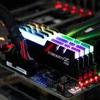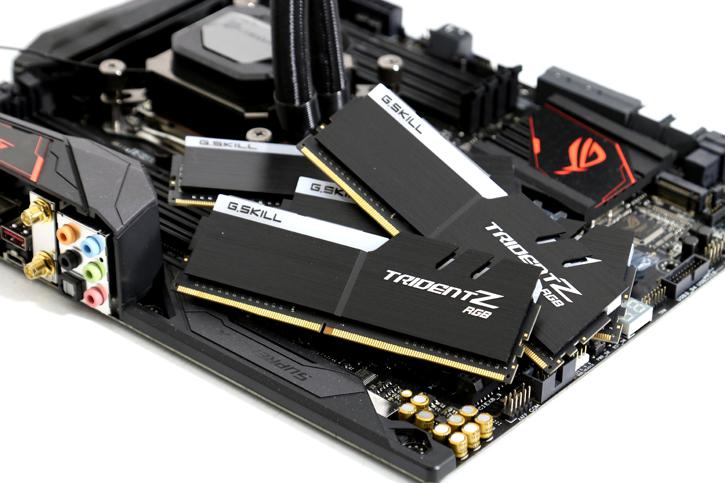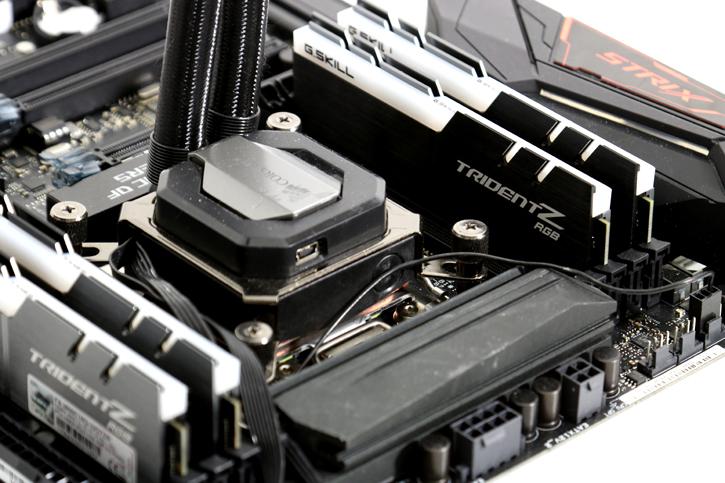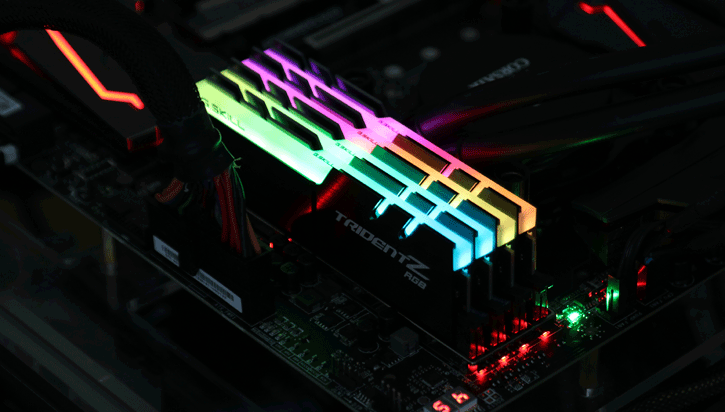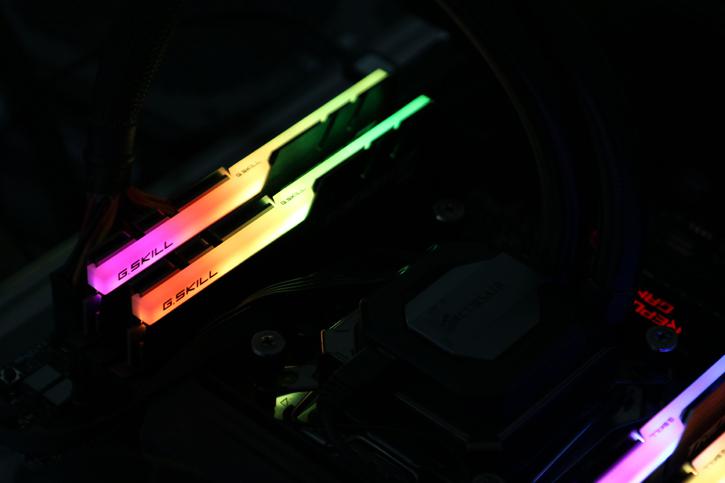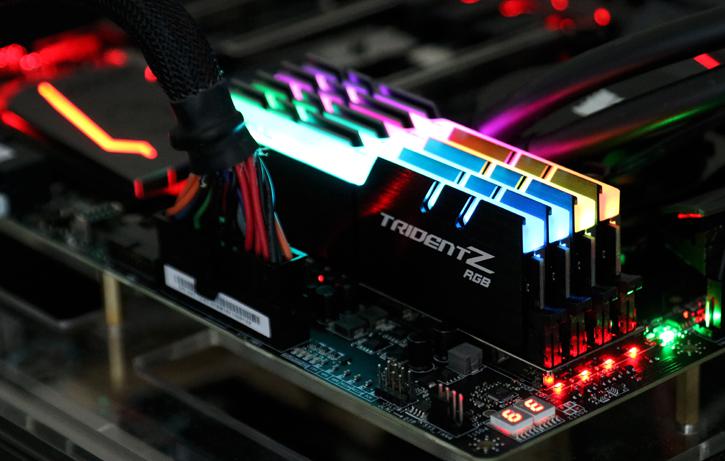Product Showcase
The heat-spreader is designed to enhance heat dissipation allowing better tweaks and overclocks, albeit does anyone really OC their memory these days? I mean that's what you purchase more expensive XMP memory for right, as the tweaking was done for you already. The TridentZ theme as a result this is not low profile memory though. The idea is that heat is moved away from the actual memory chips and this increases potential overclocking and stability.
Still with this design any cooler in close vicinity of the memory should install just fine. Thanks to that metal bar the memory is very sturdy and can be inserted into the DIMM slots with ease. This memory is also about good looks so I decided to throw in these extra photos as these photo above says it all really. Our type of DIMM have a black aluminum strip on the frontside and a subte grey at the backside.
G.Skill may (correct me if I am wrong) be using a PCB with eight layers with a total of two say ounces of copper ? So yes, I have seated this memory on noth a X99 setup and also a Z270 setup. The first would be quad-channel and the latter a dual-channel configuration. Above Z270 on an MSI motherboard, that's pretty much how that looks like with four DIMMs. Once you power up the PC the DIMMs jump into a default configuration, an RGB rainbow wave effect. Really cool.
In the above photo we moved the memory towards a quad-channel X99 ASUS STRIX motherboard with Aura. In the BIOS just flick the XMP 2.0 compatible profile, and you'll be up and running at advertised speeds. The memory itself is optimized for the Intel Z170/Z270 platform with corresponding Skylake/ Kaby lake architecture series processors.
Okay, I tend to like the Z270 setup better, look at that ! We'll move this article foward with a dual-channel Z270 setup.
